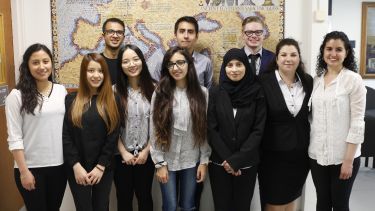Postgraduate masters courses
In our postgraduate masters courses, we provide an innovative study programme in which students are challenged to achieve their best; you'll develop the specialist skills and knowledge sought after by employers.

On

International Merit Scholarships
We offer a generous package of financial support for international students including 75 undergraduate scholarships worth £10,000 towards the annual tuition fee and 125 postgraduate taught scholarships worth £5,000 towards the tuition fee. Applications are now open for existing offer holders.

